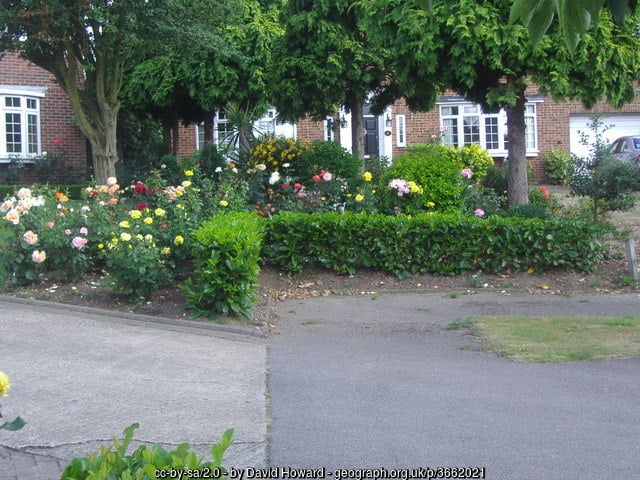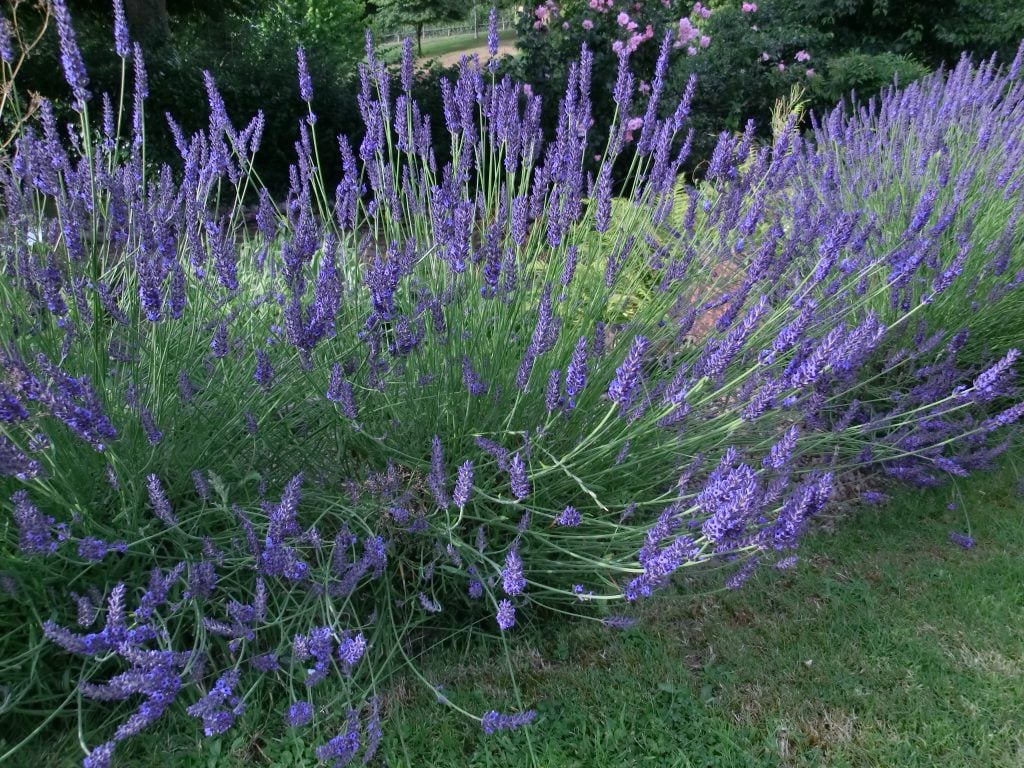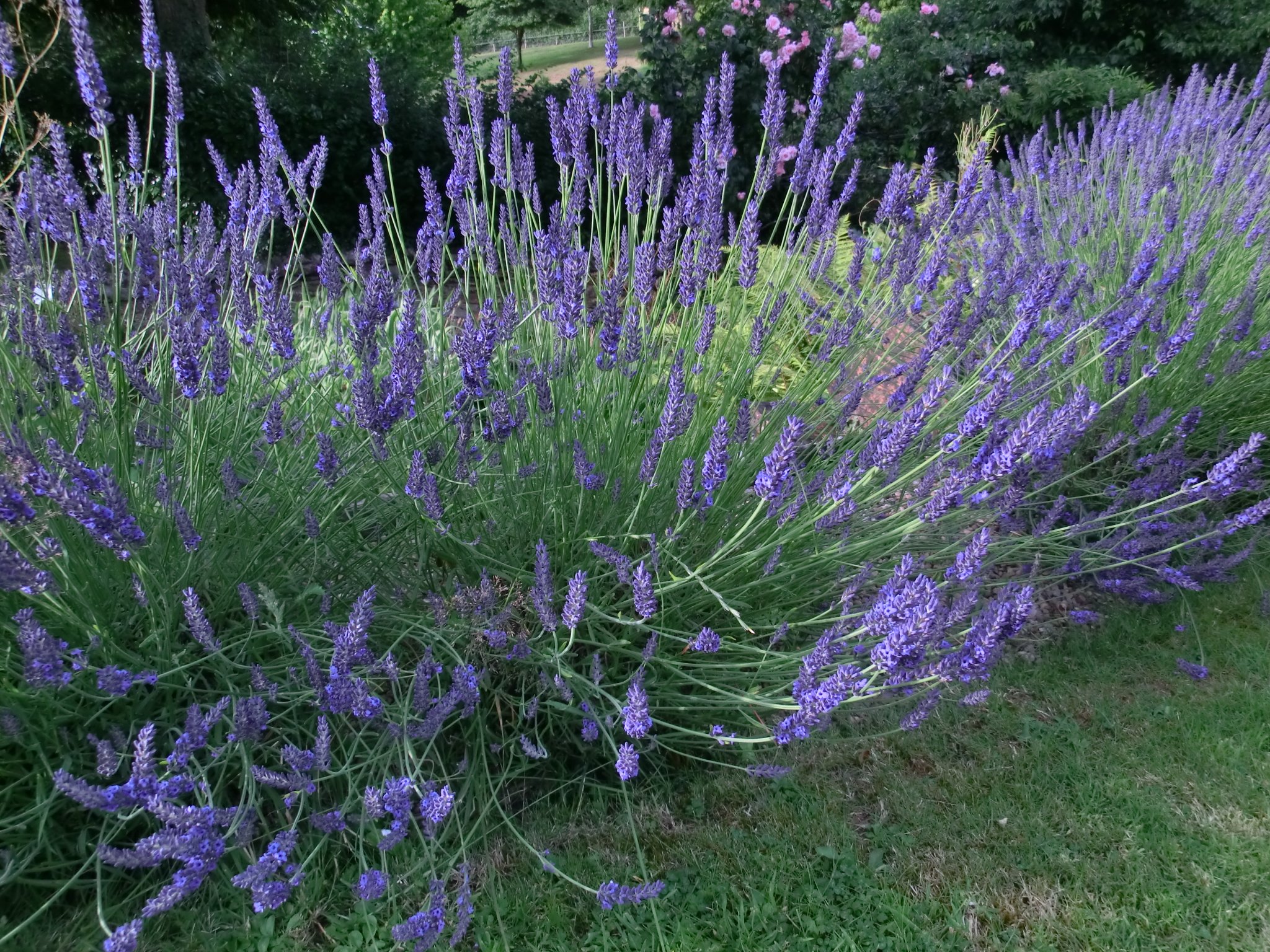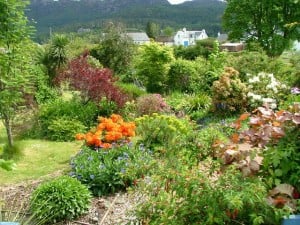Choose plants that suit your garden
Knowing the plants that suit your garden is essential to good planning and great gardens. It helps you choose plants that will thrive and make the most of your garden and investment.

Choosing plants that suit your garden make an easy and lovely show, just like this rose bed in a shaded and fairly dry front garden in Long Ditton. David Howard, Geograph.
Finding plants that suit your garden
Across your garden you need to know:
- the pH of the soil. Use a DIY soil testing kit available in garden centres to find out how acid or alkali the soil is. The RHS explain how to do it and offer a soil testing service for a more accurate result.
- the texture of the soil: feel it to find out if it is sandy or stony, sticky (that’s clay) or fibrous (with lots of leaf mould and compost mixed in – ideal!)
- how wet or dry the soil is (that will vary across the garden)
- how much shade there is (and that will vary according to trees, fences or shed)
- how much space there is.
The pH of the soil will not vary much across your garden, but other things like shade or the amount of moisture in the soil will. It helps to write on a sketch plan of your garden the different areas. That way you can be sure to choose and plan for plants in the right places. And to help you choose, here are some of my favourite plants for the difficult areas in my garden. Plants for shade
Small gardens are often shaded, at least in part, by trees or buildings. Those facing north or east can seem cold and dark but there are lovely shrubs that thrive here. My favourite has to be Mahonia. I have only recently fallen in love with this prickly plant, wooed by its stunning winter flowers in gleaming yellow and their scent.
Down on the ground, in damp shade, is where Vinca (commonly known as periwinkle) thrives. I love the glossy leaves and sparkling flowers. There are varieties with variegated leaves that add light to shady places and varieties with white, pink or purple flowers.
In dry or damp shade, my favourite small plant is Pulmonaria (commonly known as lungwort). Different varieties offer different coloured flowers. The spotted leaves (some don’t have those, so look carefully when you buy) look great all year and these tough plants are hard to live without.
Dry shade is harder! My all time favourite here is Geranium phaeum (both album, which has white flowers, and samobor, which has chocolate coloured flowers). The leaves are light and airy and add something to these tough places. Other Geranium thrive in dry shade too (and many will thrive just about anywhere that is not waterlogged) and Geranium macrorrhizum is great value across your garden, giving pretty flowers and leaves that take on autumn colours.
Plants for damp and wet (not waterlogged) areas
These areas are often shady too so they are a challenge. Few of us have the space for Gunnera manicata - the big leafed plant that looks like a giant rhubarb that we see in Victorian parks and gardens beside ponds and stream. Down on the ground in damp areas we can all enjoy its cousin: Gunnera magellanica. A lovely little plant that covers the ground with glossy green leaves.
Ferns, such as Asplenium, love damp conditions and their structure can help lift an otherwise gloomy area, but they are not everyone’s cup of tea and in a hard winter can look sad. So look for something that suits you on this RHS video which is filled with advice on what to choose and how to make the most of a very damp and shady spot.
Plants for hot, dry and sunny spaces
The challenge here is keeping the wrong plants alive, so choose plants that like hot sun! The RHS has produced a handy guide to help you choose the right plants. If your garden has a lot of hot, dry and sunny spots, take it with you when you go shopping! For me, the best plant for these areas has always been lavender. With other grey leaved ‘Mediterranean’ plants it’s a must have for the summer. Bring it on!

Plants that suit your garden if it is dry and sunny must include lavender. Sarah Buchanan, Roadwater, 2016.
The key to planning a great garden is to choose plants that will suit the soil, the aspect and the space you have on offer. So find the plants that suit your garden and plan to make the most of them.
Sign up for our emails below, so we can send you blogs on gardening tips, as well as updates on our sales, so you don’t miss out on those garden furniture bargains!








